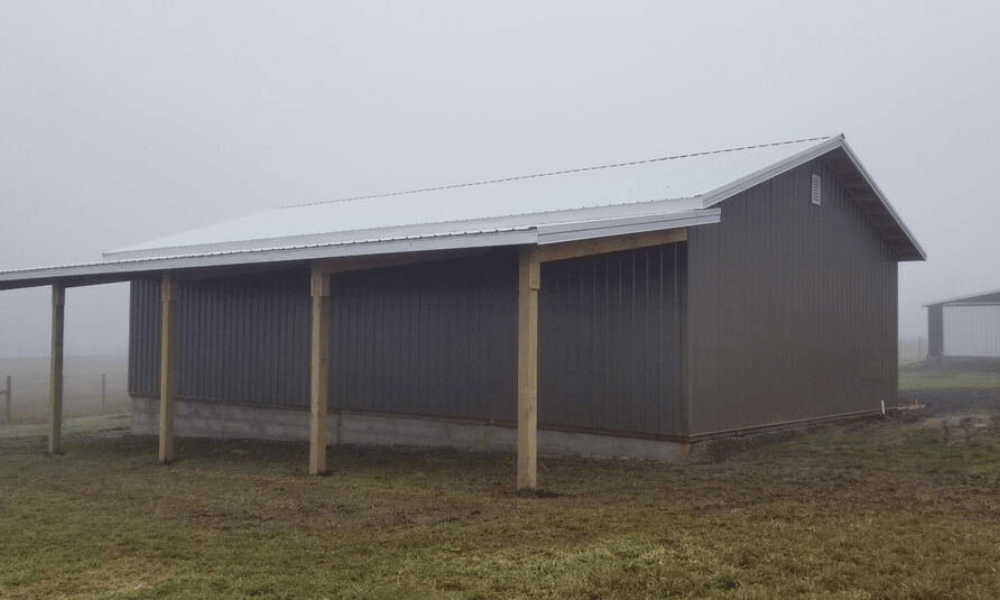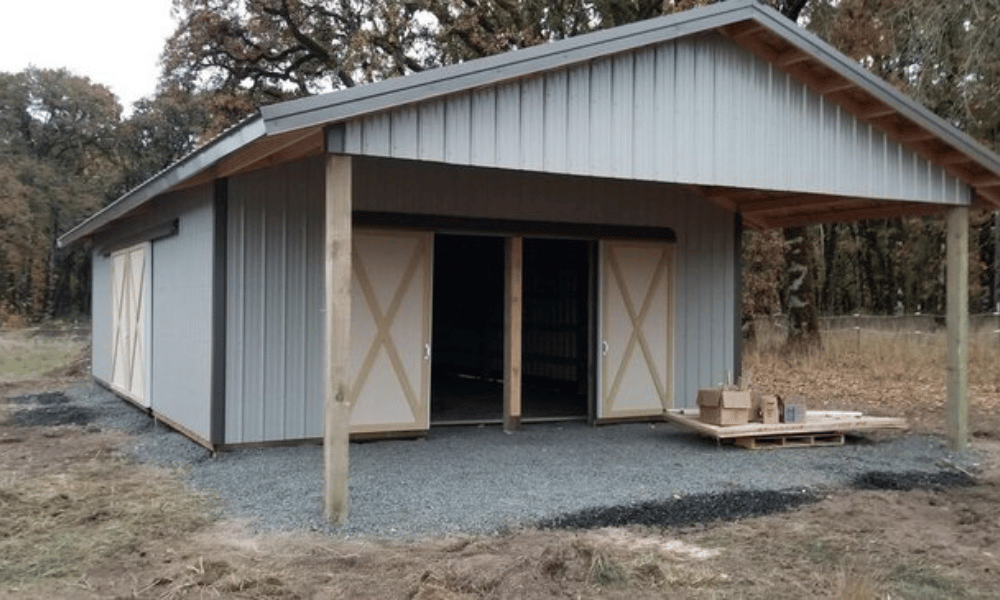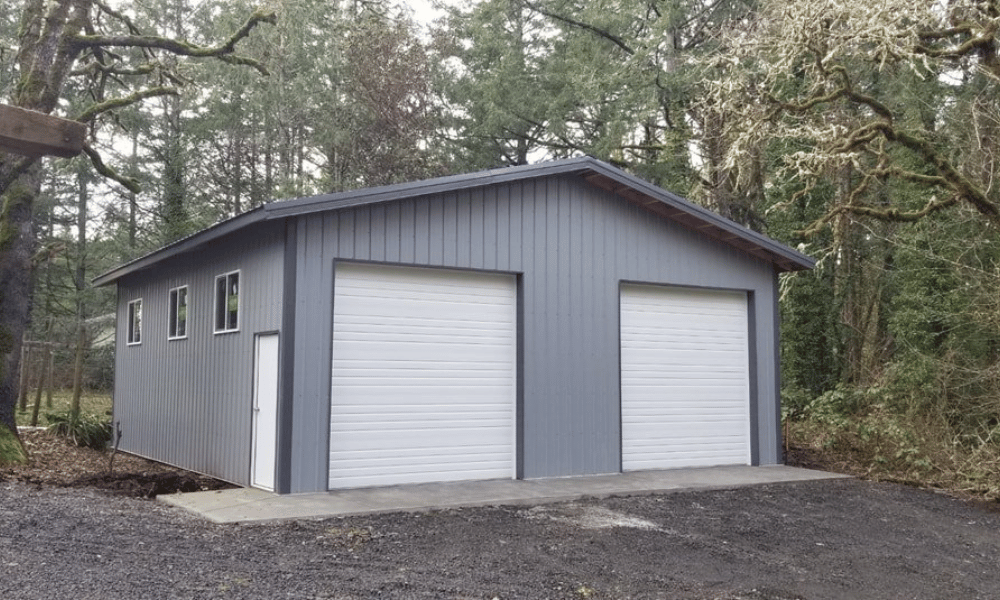Introduction
Farming is not just a profession; it's a way of life. For the modern farmer, ensuring that livestock have a safe, comfortable, and durable shelter is paramount. One option that's gaining traction in the agricultural community is pole buildings. These structures, often referred to as post-frame buildings, are designed specifically to meet the needs of farmers who want efficient and effective livestock housing. In this article, we’ll delve deep into why every farmer should consider a pole building for livestock shelter.
Why Every Farmer Should Consider a Pole Building for Livestock Shelter
When it comes to selecting the right type of shelter for livestock, several factors come into play: cost-effectiveness, durability, space efficiency, and ease of construction. Pole buildings offer unique advantages that make them an https://rabbit-influence.uncrn.co/blog/why-a-pole-barn-is-worth-it-10-key-advantages-explained/ excellent choice for farmers.
Understanding Pole Buildings
What Are Pole Buildings?
Pole buildings are structures supported by vertical posts or poles buried in the ground rather than relying on traditional foundations. This design allows for larger open spaces without interior support beams, providing flexibility in layout and usage.

History of Pole Buildings in Agriculture
The use of pole buildings dates back several decades but has gained popularity over time due to advancements in materials and construction techniques. Initially used for simple storage solutions, they've evolved into sophisticated structures serving multiple functions on modern farms.

Advantages of Using Pole Buildings for Livestock Shelter
Cost-Effectiveness Over Traditional Structures
One significant advantage of pole buildings is their affordability compared to traditional barns. The reduced need for foundational work translates into lower labor costs and quicker project completion times.
Durability in Various Weather Conditions
Farmers know that weather can be unpredictable. Pole buildings are constructed with durable materials designed to withstand harsh conditions such as heavy snowfall, high winds, and extreme temperatures.
Energy Efficiency Benefits
With proper insulation and ventilation strategies integrated into the design, pole buildings can help minimize energy costs associated with heating or cooling livestock shelters.
Flexibility in Design and Functionality
Customizable Layouts to Suit Your Needs
One of the standout features of pole buildings is their versatility. Farmers can easily customize layouts based on specific needs—whether that's creating separate pens for different species or designing large open areas for movement.
Multi-Functional Uses Beyond Livestock Housing
While primarily used as shelters for livestock, these structures can also serve other purposes such as storage facilities or workshops—a true asset on any farm.
Construction Process: From Planning to Completion
Step-by-Step Guide to Building a Pole Structure
Planning: Assess your needs (size, function) and obtain necessary permits. Site Preparation: Clear the area where the building will be erected. Foundation Work: Install poles deep into the ground. Framework Construction: Erect walls using trusses. Finishing Touches: Add roofing materials and insulation as needed.Timeframe Expectations When Constructing a Pole Building
Typically, constructing a pole building may take anywhere from a few weeks to several months depending on size and complexity—significantly less than traditional barn constructions.
Essential Features Every Farmer Should Consider
Ventilation Systems: Keeping Livestock Comfortable
Proper airflow is crucial for animal health; therefore, incorporating effective ventilation systems within your pole building design is essential.
Insulation Options: Protecting Against Temperature Extremes
Choosing appropriate insulation materials can enhance energy efficiency while ensuring your livestock remain comfortable throughout seasonal changes.
Environmental Impact Considerations
Sustainable Materials Used in Construction
Many modern pole buildings utilize eco-friendly materials reducing environmental footprints which align with sustainable farming practices.
Waste Management Strategies Within Structures
Consideration must also be given to waste management systems that can be integrated into these shelters—ensuring cleanliness while minimizing odors that could affect livestock health.
Financial Considerations: Is It Worth It?
Initial Investment vs Long-Term Savings Analysis
While there will always be an upfront investment when constructing any building type, understanding how pole buildings save money over time through reduced maintenance costs is important when making decisions.
Insurance Benefits Associated with Durable Structures
Investing in durable structures may lead to lower insurance premiums; many insurers recognize the longevity of well-built pole barns leading to potential savings year after year.
Real-Life Success Stories from Farmers Using Pole Buildings
Case Study 1: Dairy Farm Transformation
A local dairy farm shifted from traditional barns to pole structures resulting in improved milk production thanks to better cow comfort levels during extreme weather conditions.
Case Study 2: Diversified Livestock Operations
Another farmer found that utilizing pole buildings allowed him greater flexibility with his operations enabling him to raise additional species more comfortably—all under one roof!
FAQs
1. What types of livestock benefit most from pole buildings?
Pole buildings are suitable for various types of livestock including cattle, goats, sheep, pigs, and poultry due to their customizable layouts and ventilation options.
2. How long do pole buildings last?
With proper maintenance and care, many farmers report their pole structures lasting decades—some even up to 50 years!
3. Can I build my own pole building?
Yes! Many farmers choose DIY approaches; however hiring professional contractors may result in faster completion times and adherence to local codes/regulations.
4. Are there any zoning restrictions when constructing a pole building?
Always check local zoning laws before beginning construction as regulations vary by location regarding size limitations or required permits!
5. How much does it typically cost per square foot?
Costs vary widely based on location but average anywhere from $20-$40 per square foot including materials & labor but always request quotes from multiple contractors!
6. Is financing available specifically for agricultural construction projects like this?
Yes! Many banks offer loans tailored towards agricultural improvements including constructions such as these so inquire locally about available options!
Conclusion
In conclusion, considering all aspects discussed above makes it clear why every farmer should consider a pole building for livestock shelter. The benefits range from cost-effectiveness and durability to flexibility in design—all pivotal elements contributing positively toward improving farm operations overall!

By choosing this innovative structure type not only will farmers enhance their productivity but also ensure their animals' well-being through thoughtful design choices—making it truly an investment worth exploring!